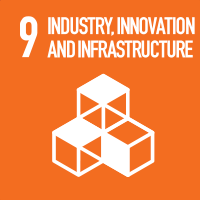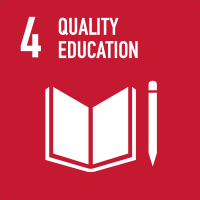Studying at the University of Verona
Here you can find information on the organisational aspects of the Programme, lecture timetables, learning activities and useful contact details for your time at the University, from enrolment to graduation.
Type D and Type F activities
This information is intended exclusively for students already enrolled in this course.If you are a new student interested in enrolling, you can find information about the course of study on the course page:
Laurea in Bioinformatica - Enrollment from 2025/2026Type D and Type F activities
Type D educational activities are at the student's choice, Type F activities are additional knowledge useful for job placement (internships, transversal skills, project works, etc.). According to the Didactic Regulations of the Course, some activities can be chosen and entered independently in the booklet, others must be approved by a special committee to verify their consistency with the study plan. Type D or F training activities can be covered by the following activities.
1. Teachings delivered at the University of Verona.
Include the teachings listed below and/or in the Catalog of Teachingshttps://www.univr.it/it/catalogo-insegnamenti - Opens in a new window (which can also be filtered by language of delivery via Advanced Search).
Booklet entry mode: if the teaching is included among those listed below, the student can enter it independently during the period- Opens in a new window in which the syllabus is open; otherwise, the student must make a request to the Secretariat, sending to carriere.scienze@ateneo.univr.it- Opens in a new window the form- Opens in a new window in the period indicated- Opens in a new window.
2. CLA language certificate or equivalency.
In addition to those required by the curriculum, the following are recognized for those matriculated from A.Y. 2021/2022:
- English language: 3 CFUs are recognized for each level of proficiency above that required by the course of study (if not already recognized in the previous course of study).
- Other languages and Italian for foreigners: 3 cfu are recognized for each proficiency level starting from A2 (if not already recognized in the previous study cycle).
These cfu will be recognized, up to a maximum of 6 cfu in total, of type F if the teaching plan allows it, or of type D. Additional elective credits for language knowledge may be recognized only if consistent with the student's educational project and if adequately motivated.
Those matriculated up to A.Y. 2020/2021 should consult the information found here- services - cla - language exercises - science and engineering https://www.scienzeingegneria.univr.it/?ent=iniziativa&id=4688 - Opens in a new window.
Booklet entry mode: apply for the certificate- Opens in a new window orequivalency- services - recognition of external language certifications - cla Opens in a new window to the CLA and send it to the Student Secretariat - Careers for the inclusion of the exam in the career, by email: carriere.scienze@ateneo.univr.it- Opens in a new window
3. Soft skills
Discover the training paths promoted by the University's TALC - Teaching and learning centerhttps://talc.univr.it/ - Opens in a new window, intended for students regularly enrolled in the academic year of course delivery https://talc.univr.it/it/competenze-trasversali- Opens in a new window
Booklet entry mode: The teaching is not intended to be included in the syllabus. Only upon obtaining theOpen Badgehttps://talc.univr.it/it/servizi/open-badge - Opens in a new window will the booklet CFUs be automatically validated. The registration of CFUs in career is not instantaneous, but there will be some technical time to wait.
4. Contamination lab
The Contamination Lab Verona (CLab Verona) is an experiential pathway with modules dedicated to innovation and business culture that offers the opportunity to work in teams with students from all courses of study to solve challenges launched by companies and institutions. The pathway allows students to receive 6 CFUs in the D or F area. Discover the challenges: https://www.univr.it/clabverona- Opens in a new window
PLEASE NOTE: To be eligible to take any teaching activity, including electives, you must be enrolled in the year of the course in which it is offered. Therefore, it is recommended that undergraduates of the December and April sessions DO NOT take extracurricular activities of the new academic year, in which they are not enrolled, since these degree sessions are valid with reference to the previous academic year. Therefore, for activities carried out in an academic year in which they are not enrolled, no recognition of CFUs can be given.
5. Internship/internship period
In addition to the CFUs stipulated in the curriculum (check carefully what is indicated on the Educational Regulations) here- services - internships and apprenticeships - science and engineering It opens in a new window you can find information on how to activate the internship.
Check in the regulations which activities can be Type D and which can be Type F.
Please also note that for internships activated from October 1, 2024, it will be possible to recognize excess hours in terms of Type D credits, limited only to internship experiences carried out at host institutions outside the University.
| years | Modules | TAF | Teacher |
|---|---|---|---|
| 2° 3° | Attention Laboratory | D |
Pietro Sala
(Coordinator)
|
| 2° 3° | Elements of Cosmology and General Relativity | D |
Claudia Daffara
(Coordinator)
|
| 2° 3° | Introduction to quantum mechanics for quantum computing | D |
Claudia Daffara
(Coordinator)
|
| 2° 3° | Introduction to smart contract programming for ethereum | D |
Sara Migliorini
(Coordinator)
|
| 2° 3° | Python programming language [English edition] | D |
Carlo Combi
(Coordinator)
|
| 2° 3° | BEYOND ARDUINO: FROM PROTOTYPE TO PRODUCT WITH STM MICROCONTROLLER | D |
Franco Fummi
(Coordinator)
|
| 2° 3° | APP REACT PLANNING | D |
Graziano Pravadelli
(Coordinator)
|
| 2° 3° | HW components design on FPGA | D |
Franco Fummi
(Coordinator)
|
| years | Modules | TAF | Teacher |
|---|---|---|---|
| 2° 3° | Attention Laboratory | D |
Pietro Sala
(Coordinator)
|
| 2° 3° | LaTeX Language | D |
Enrico Gregorio
(Coordinator)
|
| 2° 3° | Python programming language [Edizione in italiano] | D |
Carlo Combi
(Coordinator)
|
| 2° 3° | Rapid prototyping on Arduino | D |
Franco Fummi
(Coordinator)
|
| 2° 3° | Programming Challanges | D |
Romeo Rizzi
(Coordinator)
|
| 2° 3° | Tools for development of applications of virtual reality and mixed | D |
Andrea Giachetti
(Coordinator)
|
| 2° 3° | Development and life cycle of software of artificial intelligence software | D |
Marco Cristani
(Coordinator)
|
| 2° 3° | Protection of intangible assets (SW and invention)between industrial law and copyright | D |
Mila Dalla Preda
(Coordinator)
|
| years | Modules | TAF | Teacher |
|---|---|---|---|
| 1° | Subject requirements: mathematics | D |
Franco Zivcovich
(Coordinator)
|
Introduction to computer architecture (2024/2025)
Teaching code
4S008224
Credits
6
Language
Italian
Scientific Disciplinary Sector (SSD)
ING-INF/05 - INFORMATION PROCESSING SYSTEMS
Courses Single
Authorized
The teaching is organized as follows:
Teoria
Laboratorio
Learning objectives
The aim of the course is to provide the theory and practice to implement an algorithm in hardware, exploring a spectrum of options ranging from dedicated specialized devices to programs on a gene-ral-purpose processor. The students will understand how a processor works and how a high-level program is translated into machine language and then executed. At the end of the course, the students will be able to design specialized hardware for simple algo-rithms; translate simple programs from an high-level specification to machine language
Prerequisites and basic notions
No prerequisites
Program
Theory
------
- Information representation
- Binary representation of numbers: two's complement, fixed and floating point representation, hexadecimal notation
- Combinatorial circuits: truth tables, Boolean algebra and logic gates
- Axioms and theorems of Boolean algebra
- Incompletely specified functions
- Minterms, prime implicants, and essential implicants
- Logical minimization using Karnaugh maps
- Construction of combinatorial modules by structural design: rules, bit-wise logic gates, comparators, arithmetic modules, multiplexers, decoders, shifters
- Performance of a combinatorial module: literals, logic gates, area, delay
- Sequential circuits
- Finite state machines: state diagram, state table, transition table, synthesis of state and output update logic
- Memory cells and registers
- State minimization and its impact on logic synthesis
- Structural design of sequential modules: arithmetic-logical units and counters
- Controller/data-path approach
- Performance of sequential modules: area, delay, consumption
- Parallelism schemes: pipelines and farms
- Design methodologies of a digital system
- Architecture of a processor: control unit and execution unit
- Fetch-decode-execute cycle of an instruction
- Types of instructions and fundamental registers
- Interaction with input-output units
- Execution cycles of register addition operations, reading/writing from/to memory, jumping
- Implementation of an algorithm using dedicated hardware or software
Laboratory
----------
- Architecture of the LC-3 processor
- Writing programs in Assembly language for LC-3
Bibliography
Didactic methods
The course is organized in lectures, exercises and practical computer activities.
Learning assessment procedures
The exam consists of two parts:
- a written test containing questions and exercises related to Theory;
- a written programming test related to the machine language of the LC-3 architecture.
Evaluation criteria
To pass the exam, students must demonstrate that they:
- have understood the principles underlying the digital implementation of an algorithm;
- know how to perform exercises on the binary representation of numbers;
- know how to design simple combinatorial and sequential circuits;
- know how to write simple Assembly programs for LC-3.
Criteria for the composition of the final grade
The theory test grade contributes 3/4 of the final grade, and the programming test grade for LC-3 contributes 1/4.
Exam language
Italiano


